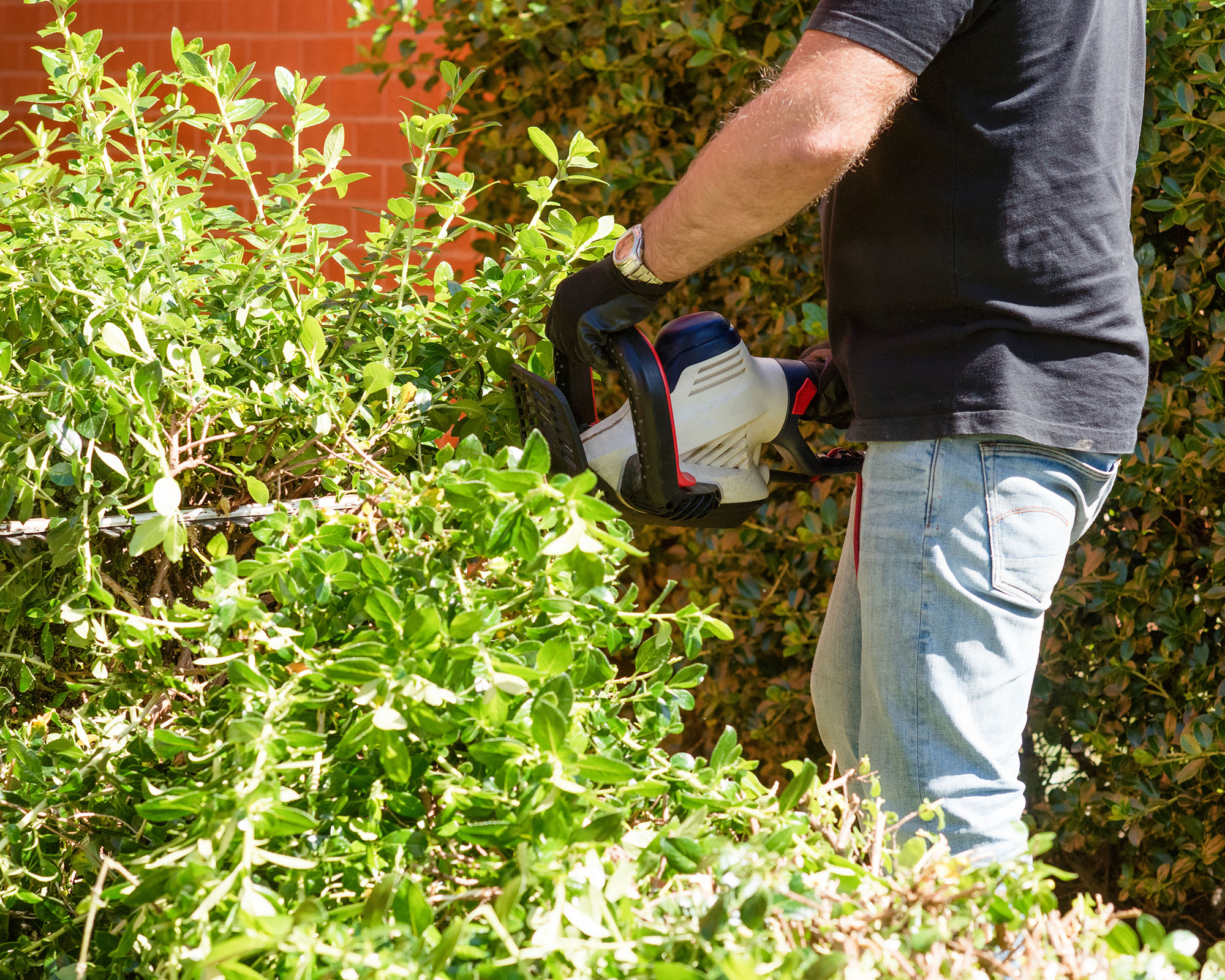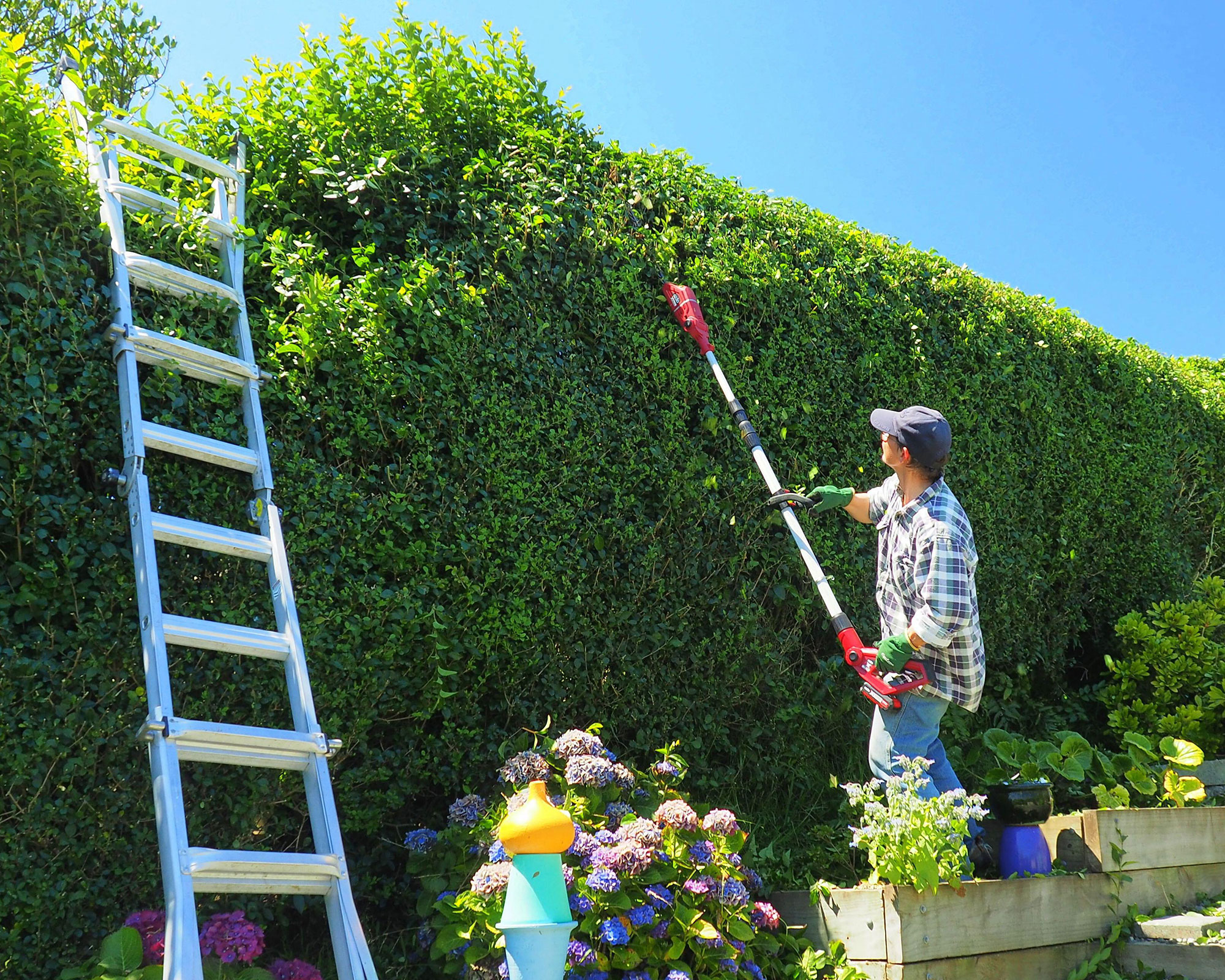How to use a hedge trimmer: expert tips to get the best results
Find out how to use a hedge trimmer the right way. This is what the professionals do to keep hedges in check


Get in the know about how to use a hedge trimmer and you’ll enjoy great results every time your hedges and bushes needs pruning and shaping. Using a hedge trimmer is the quickest route to keeping them tidy, helping ensure your yard stays looking its best.
Using a hedge trimmer correctly will also assist in keeping hedging plants healthy, and it will mean you’ll be able to do the job with maximum safety, too.
We’ve asked the experts to provide the lowdown on how to use the best hedge trimmers step by step, the errors they see people making when they use one of these tools and how to make sure you don’t repeat them, and getting the very best from your hedge trimmer, and you’ll find all the information you need right here.

Step-by-step tips on how to use a hedge trimmer
Want to know how to use a hedge trimmer safely and effectively? Follow these steps so you can learn how to trim a hedge with confidence.
1. Check the area
Before you begin trimming a hedge, make sure there are no potential problems. ‘Check for electric cables, insects, animals, and other items that could damage the cutting attachment,’ says Ryan Patterson, Husqvarna consumer segment manager.
It’s worth preparing the area below the hedge, too. ‘Add a groundsheet or protective layer below your working area to catch any fallen twigs or branches, and to make your cleanup easier once you’re finished,’ Ryan advises.

2. Know the safety practices
A vital step when it comes to how to use a hedge trimmer is to protect yourself before you begin work. ‘Ensure you wear correct PPE (personal protective equipment) including eye, ear, hand, and foot protection, and avoid wearing loose or baggy clothing that can get caught in twigs and branches,’ says Ryan Patterson.
The hedge trimmer itself should be ready for use. ‘Having the trimmer blades well-lubricated is essential before and after cutting,’ says Helene Keary, assistant marketing manager, Ryobi.
Besides paying attention to trimmer blades, other checks are necessary. ‘Are all nuts, screws, and bolts tight? Are all handles secure?’ says Ryan.
Carry the trimmer correctly. ‘When holding the hedge trimmer, be sure to use the front and back hand grip and place your thumb under the handle,’ says Helene. ‘Keeping your hand behind the protective guard will ensure your safety throughout using the power tool.’
Another essential to stay safe while using it? ‘Balance is important so ensure you hold the machine as close to your body as possible and always with two hands,’ says Ryan. Make sure your gardening gloves are suitable and allow you to hold the hedge trimmer firmly.
‘If your hedge trimmer is fitted with a pivoting rear handle feature you can use this to work from a more ergonomic position,’ he adds.

3. Start slowly and at the base
Begin cutting carefully. ‘Start with small slow cuts to tidy up your hedge without risking taking chunks away and ruining it,’ says Ryan Patterson.
You should start from the base of the hedge. ‘Aim to start from the bottom and slowly work your way up,’ says Helene Keary. ‘Try not to apply too much pressure on the tool and keep a close eye on the depth of your trim as it should be consistent throughout to provide a clean and even cut. You can always use a sweeping action to cut the thinner branches.’
Cutting both vertically and horizontally are possible. ‘For vertical cuts, use an up-and-down swing motion,’ advises Ryan. ‘For horizontal cuts, hold the cutting blade at an angle of about 10 degrees and guide the blade across the hedge. Swing in an arch towards the hedge so that the cuttings are swept to the ground.’
4. Care for the hedge trimmer after use
If you want the hedge trimmer to be ready for the next cut, it’s important to care for it before storing it away.
‘Clean your hedge trimmer blades after each use by wiping down with soapy water and a cloth,’ says Ryan Patterson. ‘Apply a lubricant after each use to protect from corrosion and to keep them moving freely on their next use.’
Taking the time and care to look after your garden tools is essential if you want to know how to use a pressure washer and how to use a snow blower correctly too.

How to get the best from a hedge trimmer
If you’re buying a hedge trimmer for the first time, be aware of the attributes that can make it easier to use.
‘The key to a pleasant trimming experience is having a tool that is lightweight, ergonomic, easily maneuverable and comfortable to use when cutting from a variety of angles,’ says Helene Keary.
Buy to suit your yard, too. ‘Make sure you have the most appropriate trimmer for the job and that it meets your needs: a double-sided hedge trimmer for shaping, a single-sided hedge trimmer for larger areas, or a pole hedge trimmer for areas that require longer reach,’ says Ryan Patterson. ‘And choose a hedge trimmer with the appropriate length of cutter bar for the job you intend to do.’

Bear in mind that maintaining a hedge trimmer doesn’t just mean cleaning the blades after you’ve used it. Use these tips from Ryan to keep yours in good working order:
- Clean the air filter regularly as a buildup of debris and dust here can lead to weakened engine power and poor performance.
- Sharpen your blades roughly every 50 hours of use to ensure they provide sharp cutting. If required, take your trimmer to your local service center who can help with this.
- Keep the exterior clean too as this can lead to overheating as cool air cannot run freely over the motor.
- Store your trimmer somewhere which is secure and not prone to leaks or damp, as this can shorten the trimmer’s lifespan. There are plenty of practical garden storage ideas to ensure it stays in tip-top condition.
Hedge trimmer mistakes and how to avoid them
Asking how to use a hedge trimmer without falling into the common traps? Use this advice from Ryan Patterson:
- The engine should be cool before fueling or refueling, even if in the middle of a job.
- Don’t pull the starter cord all the way out or let go as this can damage the engine.
- Don’t trim your hedging plants too close to the ground as it can kick up stones or twigs.
- Don’t take too much off at one time so you can monitor your work throughout.
- If the trimmer jams, switch off the engine, ensure the blades have stopped completely and disconnect the spark plug before clearing.

Sarah is a freelance journalist and editor writing for websites, national newspapers, and magazines. She’s spent most of her journalistic career specialising in homes and gardens and loves investigating the benefits, costs and practicalities of home improvement. It's no big surprise that she likes to put what she writes about into practice, and is a serial house revamper.
